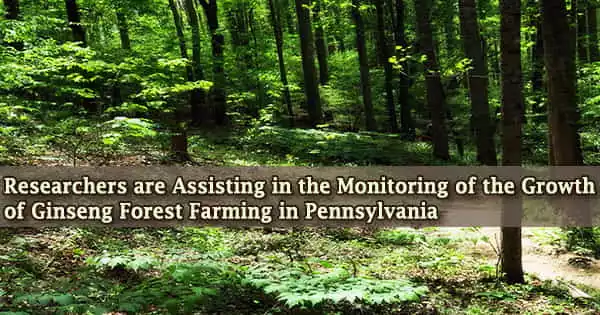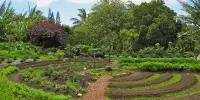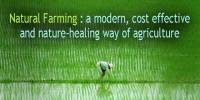According to a new study undertaken by Penn State researchers, there is good news and bad news about ginseng gathering and production in Pennsylvania, and likely most of Appalachia.
On the plus side, many collectors of the endangered forest herb prized for its medical properties appear to be sowing seeds in woods, conserving and supplementing remaining true wild populations.
However, on the bad side of the ledger, they are frequently planting seeds purchased online from locations like Wisconsin, and produced in shaded field operations with fertilizer inputs. That germplasm poses a threat to the plant’s gene pool, which has evolved to thrive in Appalachian woodlands.
According to Eric Burkhart, associate teaching professor of ecosystem science and management in the College of Agricultural Sciences, who led the study, “ginseng forest farming is growing,” and “this study was designed to examine trends in the growth of the secretive ginseng industry in Pennsylvania and how best to support and track ginseng forest farming.”
Researchers wanted to know how many people are planting ginseng and if what is sold as “wild” is truly wild, he explained. The study’s purpose was to provide more precise information to those working to conserve and develop the species’ forest farming.
“With Pennsylvania exporting around 1,000 pounds of dried ginseng roots in most years during the past decade, we’re trying to better understand where it all is coming from, since most forestlands in Pennsylvania are privately owned, and harvesting from public lands is not permissible,” said Burkhart, who also is program director of Appalachian botany and ethnobotany at Penn State’s Shaver’s Creek Environmental Center.
The researchers examined the extent to which forest farming and planting of commercially acquired seeds may contribute to wild ginseng harvest numbers using a confidential, annual survey distributed to ginseng dealers in Pennsylvania over an eight-year period.
With Pennsylvania exporting around 1,000 pounds of dried ginseng roots in most years during the past decade, we’re trying to better understand where it all is coming from, since most forestlands in Pennsylvania are privately owned, and harvesting from public lands is not permissible.
Eric Burkhart
According to research published in the journal Economic Botany, nearly three out of ten ginseng root vendors admitted that some of the ginseng they sold as “wild” was grown using forest farming practices such as distributing seeds in the forest. The researchers discovered that moreover one-fourth of the planters said they used commercially available planting stock in their efforts.
Furthermore, there was a geographic overlap between survey participants who planted seeds and the top wild ginseng harvest counties, implying that planting activities are contributing to higher harvest levels, according to the researchers.
Burkhart noted that ginseng has been classified in the Convention on International Trade in Endangered Species of Wild Fauna and Flora, or CITES Treaty, since 1975, to put the study in context.
The US Fish and Wildlife Service requires ginseng-producing states to have a legal export program with specific limits in place, such as a harvest season, as a result of the US’s participation in the treaty. In recent decades, there has been continued increase in forest farming and ginseng planting, with seed obtained from a number of sources, some commercial, according to Burkhart.
“It’s very difficult to track the growth of this industry and its contributions to Pennsylvania ‘wild’ exports because most in the ginseng industry have reservations or concerns about government tracking and involvement,” he said.
“We know that many landowners and ginseng diggers are planting seed but are concerned about sharing this information in a transparent way, due to a hesitancy about reporting ginseng-planting activities on buyer paperwork they submit to the state each year.”
Landowners and ginseng diggers are concerned about price depreciation, theft, and taxation, and they frequently argue about what constitutes truly wild plant material, according to Burkhart.
“The result is, we have many ginseng producers who don’t want to say that they planted ginseng seed,” he said.
But, according to Burkhart, in many situations, buyers are combining planted material with truly wild spontaneously occurring material, and they are paying “wild” prices because clients and consumers in Asia consider forest-farmed material to be of comparable quality.
“We continue to work with all stakeholders to help find a way to support and track the continued growth of this forest-farming industry by better aligning the Pennsylvania Department of Conservation and Natural Resources’ ginseng program with current realities, concerns, and needs expressed by Pennsylvanians,” he said.
“To this end, we continue to conduct this annual planting survey in an effort to help inform ginseng conservation and forest farming in Pennsylvania including how to address a growing demand for Pennsylvania sourced and adapted planting stock.”
















